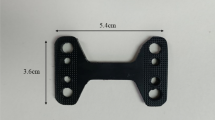Abstract
Mixed elastohydrodynamic lubrication (mixed EHL) model has been successfully used to study phenomena in chemical mechanical polishing (CMP) process. However, in various mixed EHL simulation frameworks, a polishing pad's deformation cannot correctly be described by adopted models for pad deformation such as elastic half-space model and Winkler elastic foundation model. Thus, a more accurate model for pad deformation is needed, since this is the prerequisite for an accurate prediction of contact pressure and material removal rate, which is critical for improvement of polishing quality. In this paper, a layered elastic theory, which is frequently used to calculate flexible pavement response to truck loading, is introduced into the mixed EHL model. It is found that this theory has a similar accuracy to the traditional 3D finite element method for calculating the pad deformation. However, its computational cost is much lower, which is especially important for accurate and efficient simulation of mechanical behavior and material removal rate (MRR) in CMP. In order to highlight benefits of the proposed theory, simulations are carried out based on three different pad deformation models with the mixed EHL model. The pad deformation behavior is found to have a significant influence on the final simulation results, especially the MRR prediction. By comparing the different simulation models, the proposed layer elastic theory is found to be an optimal model for describing the polishing pad deformation behavior in CMP and can provide accurate simulation results on contact pressure distribution and the material removal rate.
Similar content being viewed by others
References
Kasai T, Bhushan B (2008) Physics and tribology of chemical mechanical planarization. J Phys Condens Matter 20(22):1–13. doi:10.1088/0953-8984/20/22/225011
Ogihara M, Sagimori T, Mutoh M, Furuta H, Suzuki T, Fujiwara H, Sakuta M (2008) Single crystal thin film bonding on diamond like carbon film by intermolecular force for super high-density integration of high-power LEDs. In: 2008 I.E. international electron devices meeting, San Francisco, CA, USA, pp 1–4. doi:10.1109/IEDM.2008.4796729
Kirino O, Enomoto T (2011) Ultra-flat and ultra-smooth Cu surfaces produced by abrasive-free chemical–mechanical planarization/polishing using vacuum ultraviolet light. Precis Eng 35(4):669–676. doi:10.1016/j.precisioneng.2011.05.005
Li Y (2007) Microelectronic applications of chemical mechanical planarization. Wiley, New York, p 408
Chen KS, Yeh HM, Yan JL, Chen YT (2009) Finite-element analysis on wafer-level CMP contact stress: reinvestigated issues and the effects of selected process parameters. Int J Adv Manuf Technol 42(11):1118–1130. doi:10.1007/s00170-008-1672-5
Lee H, Jeong H (2011) A wafer-scale material removal rate profile model for copper chemical mechanical planarization. Int J Mach Tools Manuf 51(5):395–403. doi:10.1016/j.ijmachtools.2011.01.007
Lo SP, Lin YY, Huang JC (2007) Analysis of retaining ring using finite element simulation in chemical mechanical polishing process. Int J Adv Manuf Technol 34(5–6):547–555. doi:10.1007/s00170-006-0622-3
Kim AT, Seok J, Tichy JA, Cale TS (2003) Soft elastohydrodynamic lubrication with roughness. J. Tribol Trans ASME 125(2):448–451. doi:10.1115/1.1494100
Jin X, Keer LM, Wang Q (2005) A 3D EHL simulation of CMP. J Electrochem Soc 152(1):7–15. doi:10.1149/1.1823993
Zhang ZH, Du YP, Luo JB (2006) Analysis on contact and flow features in CMP process. Chin Sci Bull 51(16):1961–1965. doi:10.1007/s11434-006-2090-4
Tichy J, Levert JA, Shan L, Danyluk S (1999) Contact mechanics and lubrication hydrodynamics of chemical mechanical polishing. J Electrochem Soc 146(4):1523–1528. doi:10.1149/1.1391798
Hu I, Yang TS, Chen KS (2011) Synergistic effects of wafer rigidity and retaining-ring parameters on contact stress uniformity in chemical mechanical planarization. Int J Adv Manuf Technol 56:523–538. doi:10.1007/s00170-011-3215-8
Kim AT, Seok J, Tichy JA, Cale TS (2003) A multiscale elastohydrodynamic contact model for CMP. J Electrochem Soc 150(9):570–576. doi:10.1149/1.1598215
Burmister DM (1945) The general theory of stresses and displacements in layered soil systems. J Appl Phys 16(2):89–94. doi:10.1063/1.1707562
Muki R, Dong SB (1980) Elastostatic far-field behavior in a layered half space under surface pressure. J Appl Mech 47(3):504–512. doi:10.1115/1.3153723
Patir N, Cheng HS (1979) An application of average flow model to lubrication between rough sliding surfaces. J Lubr Technol 101(2):220–229. doi:10.1115/1.3453329
Wu CW, Zheng LQ (1989) An average Reynolds equation for partial film lubrication with a contact factor. ASME J Tribol 111(1):188–191. doi:10.1115/1.3261872
Zhou P, Kang RK, Jin ZJ, Guo DM (2012) Simulation of CMP process based on mixed elastohydrodynamic lubrication model with layered elastic theory. Adv Mater Res 565:330–335. doi:10.4028/www.scientific.net/AMR.565.330
Author information
Authors and Affiliations
Corresponding author
Rights and permissions
About this article
Cite this article
Zhou, P., Guo, D., Kang, R. et al. A mixed elastohydrodynamic lubrication model with layered elastic theory for simulation of chemical mechanical polishing. Int J Adv Manuf Technol 69, 1009–1016 (2013). https://doi.org/10.1007/s00170-013-5108-5
Received:
Accepted:
Published:
Issue Date:
DOI: https://doi.org/10.1007/s00170-013-5108-5



